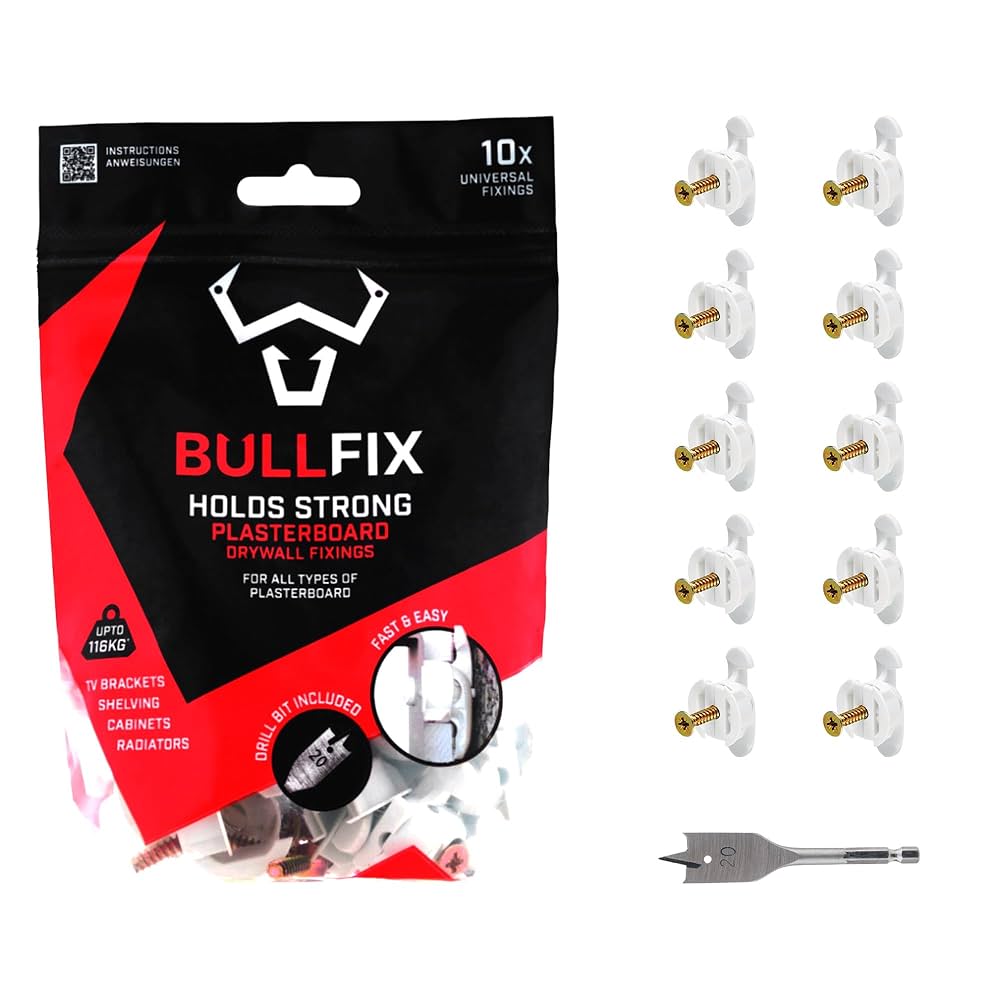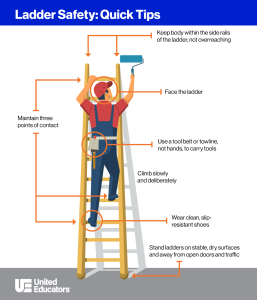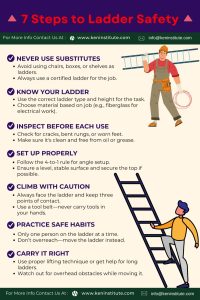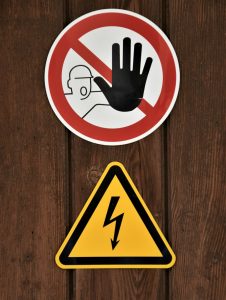Wall anchors types can be confusing if you’re trying to hang shelves, pictures, or heavy items securely on your walls. Choosing the right anchor can mean the difference between a safe, lasting hold—and a frustrating fall.
But with so many options available, how do you know which one fits your needs? In this guide, you’ll discover the most common wall anchor types, how they work, and which one is best for your specific project.
Keep reading, and you’ll gain the confidence to tackle any wall-mounting task like a pro.

Credit: www.angi.com
Common Wall Anchor Types
Wall anchors help hold objects securely on walls. They provide extra support when screws alone are not enough.
There are many types of wall anchors. Each type fits different wall materials and weight needs.
Plastic Expansion Anchors
Plastic expansion anchors are the most common type. They work well in drywall and masonry walls.
When you insert the screw, the plastic expands. This creates a tight hold inside the wall.
Self-drilling Anchors
Self-drilling anchors have sharp tips. They cut into drywall without needing a pilot hole.
They are easy to install and hold medium-weight items securely.
Toggle Bolts
Toggle bolts have wings that open inside hollow walls. The wings spread the load over a large area.
They are strong and good for heavy objects on drywall or plaster walls.
Molly Bolts
Molly bolts are metal anchors that expand behind the wall. They provide a firm hold in drywall.
They work well for medium to heavy loads and are reusable if you remove the screw carefully.
Threaded Drywall Anchors
Threaded drywall anchors have screw-like threads. They twist into drywall without pre-drilling.
These anchors hold well for light to medium items and are easy to remove.
Sleeve Anchors
Sleeve anchors are used in concrete or brick walls. The metal sleeve expands as the bolt tightens.
They offer strong support for heavy objects and outdoor applications.

Credit: www.yahoo.com
Materials And Wall Compatibility
Wall anchors help secure items to walls. Different materials need different anchors. This guide explains which anchors work best for various wall types.
Knowing the right wall anchor is important for safety and stability. Choose wisely to ensure your fixtures stay in place.
Drywall
Drywall is common in many homes. It needs special anchors to hold weight. Plastic expansion anchors work well here.
Toggle bolts are another option. They hold more weight and are easy to use.
- Plastic expansion anchors
- Toggle bolts
Concrete And Masonry
Concrete and masonry walls are very strong. Heavy-duty anchors are needed for these walls.
Use sleeve anchors or wedge anchors for best results. They provide good support in solid walls.
- Sleeve anchors
- Wedge anchors
Plaster Walls
Plaster walls are delicate and need gentle handling. Molly bolts are suitable for these walls.
Plastic anchors can also work if the weight is light. Always pre-drill holes to avoid cracks.
- Molly bolts
- Plastic anchors
Brick Walls
Brick walls are sturdy and require strong anchors. Sleeve anchors work well here.
Masonry screws are another option. They provide a firm grip and are easy to install.
- Sleeve anchors
- Masonry screws
Hollow Walls
Hollow walls need special anchors to hold items. Hollow wall anchors expand inside the wall for support.
Toggle bolts can also be used for heavy items. They provide a secure hold.
- Hollow wall anchors
- Toggle bolts
Load Capacity And Strength
Wall anchors help secure objects to walls safely. Their load capacity and strength vary by type. Choosing the right anchor keeps items stable and prevents damage.
This guide explains the load limits and strength features of light-duty, medium-duty, and heavy-duty anchors.
Light-duty Anchors
Light-duty anchors hold small loads like picture frames and light shelves. They fit drywall and plaster walls. These anchors usually support weights up to 20 pounds.
- Plastic expansion anchors
- Self-drilling drywall anchors
- Push-in anchors
Medium-duty Anchors
Medium-duty anchors suit heavier items such as curtain rods and small cabinets. They work well in drywall, wood, and concrete. Load capacity ranges from 20 to 50 pounds.
| Anchor Type | Typical Load Capacity | Wall Material |
|---|---|---|
| Toggle bolts | 30-50 lbs | Drywall, Plaster |
| Molly bolts | 25-40 lbs | Drywall, Hollow walls |
| Threaded anchors | 20-40 lbs | Wood, Drywall |
Heavy-duty Anchors
Heavy-duty anchors hold large loads like shelves, TVs, and cabinets. They attach to solid materials like concrete and brick. These anchors often support more than 50 pounds.
Common heavy-duty anchors include:
- Wedge anchors
- Sleeve anchors
- Expansion anchors
- Epoxy anchors
Installation Techniques
Wall anchors help secure objects to walls. Choosing the right installation technique keeps anchors strong.
Proper steps ensure anchors hold well and prevent damage to walls.
Pre-drilling Tips
Pre-drilling makes it easier to insert anchors. Use the right drill bit size to match the anchor.
Drill slowly and straight to avoid wall damage. Clean the hole from dust before placing the anchor.
- Choose drill bit matching anchor diameter
- Drill at a 90-degree angle to the wall
- Remove dust with a brush or air blower
Correct Anchor Placement
Place anchors where they can support weight evenly. Avoid placing anchors too close to edges or corners.
Check wall type and choose anchors suitable for it. Keep enough space between anchors for strong hold.
- Space anchors evenly for balanced support
- Avoid edges to prevent wall cracks
- Match anchor type to wall material
Tools Required
Using the right tools makes installation easier and safer. Basic tools include drills, screwdrivers, and measuring devices.
Some anchors need special tools like hammer or pliers. Prepare all tools before starting to save time.
- Electric drill with correct drill bits
- Screwdriver or drill driver
- Measuring tape or ruler
- Hammer for hammer-in anchors
- Pliers for tightening or adjusting anchors
Choosing The Right Anchor For Your Project
Picking the right wall anchor helps your project stay strong and safe. Different anchors work best for different walls and weights.
Understanding your needs and the wall type makes choosing easier. This guide covers key points to help you decide.
Weight Considerations
Check the weight of the item you want to hang. Choose an anchor that can hold more than the item’s weight for safety.
Heavy items need stronger anchors like toggle bolts or molly bolts. Light items can use plastic or self-drilling anchors.
- Light items (up to 10 lbs): Plastic anchors
- Medium weight (10-50 lbs): Molly or threaded anchors
- Heavy items (over 50 lbs): Toggle bolts or heavy-duty anchors
Wall Material Assessment
Look at what your wall is made of before picking an anchor. Different materials need different types of anchors.
Drywall, brick, concrete, and plaster walls all require specific anchors to hold items securely.
| Wall Type | Best Anchor Types |
|---|---|
| Drywall | Plastic anchors, molly bolts, toggle bolts |
| Brick | Expansion anchors, sleeve anchors |
| Concrete | Wedge anchors, sleeve anchors |
| Plaster | Molly bolts, toggle bolts |
Environmental Factors
Consider the environment where the anchor will be used. Moisture and temperature affect anchor choice.
Use corrosion-resistant anchors in damp or outdoor places to avoid rust and failure over time.
- Indoor dry areas: Standard anchors work well
- Outdoor or humid areas: Use stainless steel or plastic anchors
- Extreme temperatures: Choose anchors designed for thermal changes
Common Mistakes To Avoid
Using wall anchors incorrectly can cause damage or failure. Many people make simple errors that reduce anchor strength.
This guide highlights common mistakes to help you use wall anchors safely and effectively.
Overloading Anchors
One common mistake is putting too much weight on a wall anchor. Every anchor has a weight limit. Exceeding this limit can cause the anchor to pull out or break.
- Check the weight rating of the anchor before use.
- Distribute heavy loads across multiple anchors.
- Do not hang items heavier than the anchor’s capacity.
Using Incorrect Anchor Types
Using the wrong type of anchor for your wall type is a frequent error. Different walls need different anchors for a secure hold.
| Wall Type | Recommended Anchor |
| Drywall | Toggle or Molly Bolts |
| Concrete | Expansion Anchors |
| Brick | Plastic or Sleeve Anchors |
| Plaster | Toggle Bolts |
Improper Drilling Methods
Drilling holes incorrectly weakens anchor performance. Wrong drill bit size or angle can cause poor fit and damage.
- Use the drill bit size that matches the anchor diameter.
- Drill straight into the wall, not at an angle.
- Clear out dust from the hole before inserting the anchor.
- Avoid over-drilling, which can enlarge the hole too much.
Maintenance And Removal
Wall anchors hold items securely on walls. Proper care helps them last longer. Knowing how to remove anchors safely prevents wall damage.
This guide covers how to maintain wall anchors and remove them without harm. It also shares tips to fix walls after anchor removal.
Anchor Longevity
Wall anchors last longer with good care. Keep them clean and dry. Avoid heavy loads beyond their capacity.
Check anchors often for signs of wear or damage. Replace any that look weak or loose to keep things safe.
Safe Removal Techniques
Remove anchors carefully to avoid wall damage. Use the right tools like pliers or screwdrivers. Pull slowly and steadily.
- For plastic anchors, push them into the wall cavity.
- For metal anchors, unscrew or pull gently.
- Use a drill if screws are stuck, but be careful.
If an anchor is hard to remove, try pushing it deeper into the wall to hide it.
Wall Repair Tips
Fix holes left by anchors to restore your wall. Clean the area, then fill holes with spackle or wall filler.
- Use a putty knife to apply filler evenly.
- Let the filler dry completely before sanding.
- Sand the patch smooth to match the wall surface.
- Paint over the repaired area to blend it in.
These steps keep your walls looking clean after anchor removal.

Credit: www.amazon.ca
Frequently Asked Questions
What Are The Main Types Of Wall Anchors?
Wall anchors include plastic expansion, toggle bolts, molly bolts, and self-drilling anchors. Each type suits specific wall materials and weight capacities. Choosing the right one ensures secure mounting and prevents damage.
How Do Plastic Expansion Anchors Work?
Plastic expansion anchors expand inside the wall when a screw is driven into them. This creates a tight grip in drywall or masonry. They are ideal for light to medium loads and easy to install.
When Should I Use Toggle Bolt Anchors?
Toggle bolts are best for heavy loads on hollow walls like drywall. Their spring-loaded wings spread inside the wall cavity, providing strong support. Use them for shelving, large mirrors, or heavy fixtures.
Can Molly Bolts Be Reused?
Molly bolts are designed for permanent installations and are not reusable. Once expanded, they grip the wall firmly. Removing them usually damages the anchor, so replacement is necessary if moved.
Conclusion
Choosing the right wall anchor makes your project stronger and safer. Different anchors fit different wall types and weights. Plastic anchors work well for light items on drywall. Metal anchors hold heavier objects firmly in place. Toggle bolts are best for hollow walls and heavy loads.
Knowing these types helps you pick the best one quickly. Proper use prevents damage and keeps things secure. Always match the anchor to the wall and load. This simple step ensures your walls stay intact. Simple tools, smart choices, and safe results.








